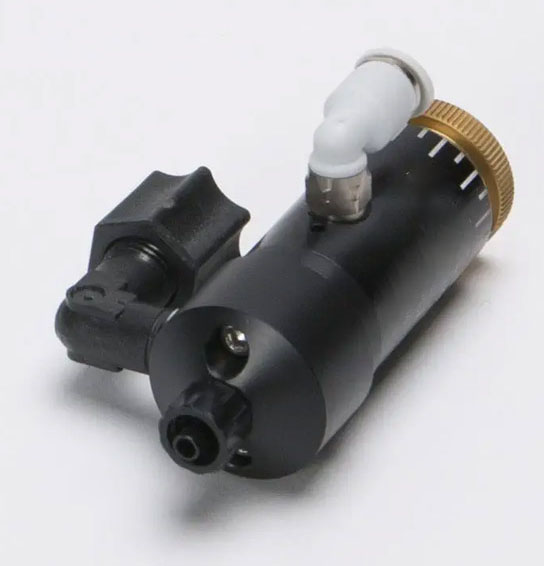What is a Dispensing Valve?
Dispensing valves are crucial components used in various industries to precisely control the flow of liquids, gases, or other substances. These valves are responsible for accurately dispensing a specific amount of material, ensuring uniformity and consistency in production processes. The applications of dispensing valves are diverse, ranging from pharmaceuticals, food and beverage, automotive, and electronics, to aerospace and many more.
Dispensing valves come in different types, including pneumatic, solenoid, electric, and manual valves. The choice of valve depends on the application’s requirements, such as the viscosity of the material being dispensed, the required flow rate, the level of precision needed, and the environmental conditions.
In general, a typical dispensing valve consists of a valve body, a seal or diaphragm to prevent leakage, an actuator (mechanical, pneumatic, or electric) to control the valve’s opening and closing, and an inlet and outlet for material flow. The opening and closing of the valve can be adjusted to control the volume and rate of material dispensed. And the universal used is the PEEK valve seat.
Why Use PEEK?
PEEK, short for Polyetheretherketone, is a high-performance engineering thermoplastic known for its exceptional properties, making it a preferred material for various industrial applications. The use of PEEK in manufacturing dispensing valves offers numerous advantages, making it a top choice for industries where precision and reliability are paramount.
a. Chemical Resistance: One of the most significant advantages of PEEK is its excellent chemical resistance. It can withstand exposure to a wide range of aggressive chemicals, solvents, and acids without undergoing significant degradation. This makes PEEK ideal for dispensing valves used in chemical processing, pharmaceuticals, and other industries where harsh substances are handled.
b. High-Temperature Stability: PEEK plastic exhibits remarkable thermal stability, allowing it to retain its mechanical properties even at elevated temperatures. It can withstand continuous use at temperatures up to 260°C (500°F) and short-term exposure to even higher temperatures. This property makes PEEK dispensing valves suitable for applications involving hot liquids or processes requiring sterilization.
c. Wear and Abrasion Resistance: PEEK is highly resistant to wear and abrasion, which ensures prolonged durability and reduced maintenance requirements for dispensing valves. It maintains its structural integrity even in demanding operating conditions, ensuring consistent and reliable performance over time.
d. Low Friction and Self-lubricating: PEEK has a low coefficient of friction, which reduces the risk of galling or sticking of moving parts within the valve. Moreover, PEEK is inherently self-lubricating, ensuring smooth operation and minimizing the need for additional lubrication.
e. Dimensional Stability: PEEK has excellent dimensional stability, which means it experiences minimal expansion or contraction under varying temperature and humidity conditions. This property ensures precise and consistent dispensing accuracy over a wide range of environmental conditions.
In conclusion, dispensing valves play a vital role in ensuring accurate and controlled material flow in various industries. When choosing materials for manufacturing dispensing valves, PEEK stands out as an exceptional option due to its outstanding chemical resistance, high-temperature stability, wear resistance, low friction, dimensional stability, and lightweight nature. By leveraging the unique properties of PEEK, industries can enhance the performance, reliability, and longevity of their dispensing systems, ultimately leading to improved productivity and product quality.


